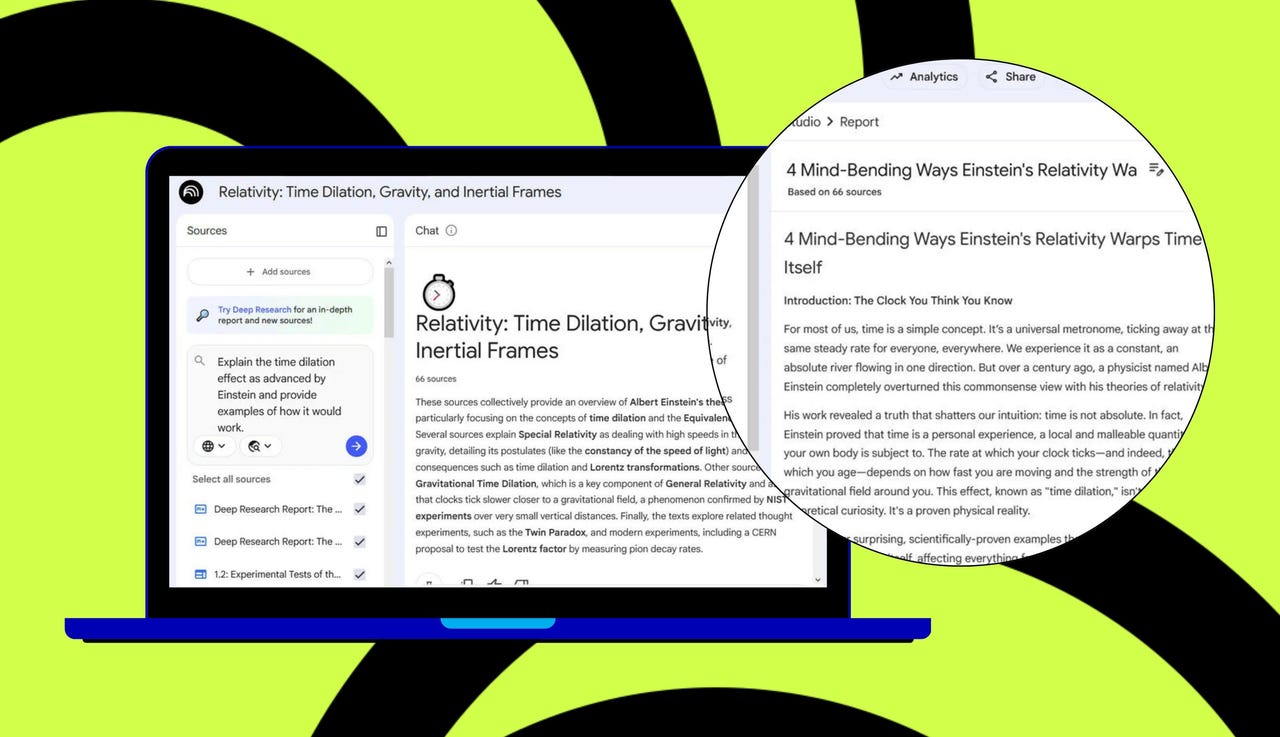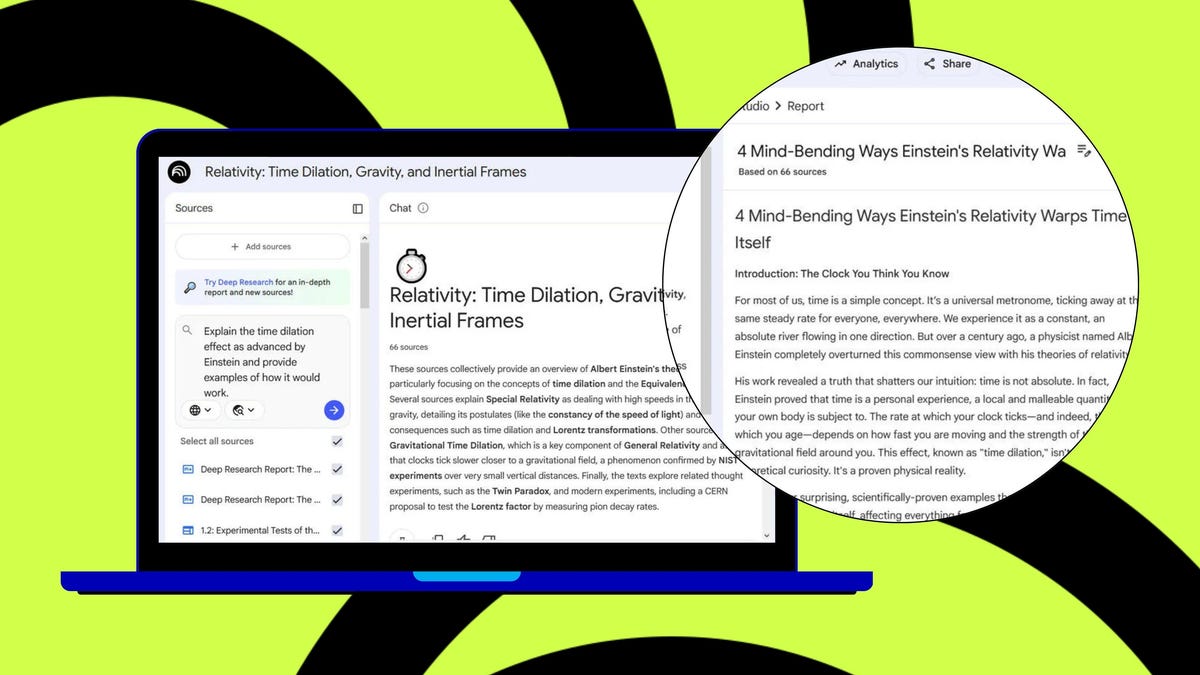 Lance Whitney / Elyse Betters Picaro / ZDNET
Lance Whitney / Elyse Betters Picaro / ZDNET
Follow ZDNET: Add us as a preferred source on Google.
ZDNET’s key takeawaysYou can now use Deep Research with Google’s NotebookLM.This lets NotebookLM compile in-depth reports on your topic.You can use Google Sheets and Word documents as sources.
Google’s NotebookLM and Deep Research are both handy tools to help you research any topic using websites, as well as your own documents and other files. Now Google is pairing the two as a way to automate complex or challenging online research.
Announced on Thursday, NotebookLM’s new Deep Research integration will scour the web on your behalf as it aims to tackle your question. Browsing hundreds of different sites, the tool tries to pare down the results to include the most reliable and accurate sources. After the mission is completed, you’re presented with a detailed report listing all the sources consulted so you can double-check the information.
Also: I turned a YouTube video into flashcards with NotebookLM – here’s how
In NotebookLM, you can influence Deep Research as little or as much as you want. You may prefer to sit back and watch while the tool carries out its research, or you could continue to add more sources or direct it to specific sites and files to help shape the final report.
“Here’s what makes NotebookLM’s Deep Research different: the report is just the beginning,” Google said in a Thursday blog post. “You can add the report and its sources directly into your notebook. You can continue to add other sources while Deep Research runs in the background, helping you assemble a rich knowledge base on any topic without leaving your workflow. And you can then use any of NotebookLM’s capabilities to pull insights or transform content to understand the report better.”
How it works
Google said that the new Deep Research mode should be available in NotebookLM to all users within a week. Here’s how it will work.
Head to the NotebookLM website and sign in with your Google account. Select the option to create a new notebook.
Close the window to add sources. Under the prompt at the main screen for your new notebook, make sure the first option is set to Web, not Drive. Click the second option to choose between Fast Research and Deep Research. Fast Research works best for a quick search if you’re in a hurry. Otherwise, the new Deep Research mode conducts a long and more in-depth analysis to find the best sources on your chosen topic.
Also: Upgrade your study game with NotebookLM – here’s how
At the prompt, type your question or request. Try to make it a meaty topic, one that would require a heavy amount of research. When ready, click the arrow to submit your prompt.
Deep Research then searches the web for sources. After it presents you with a list, you can choose to import any or all of those sources. While the report is being compiled, you can also grab additional sources, either from the web or from your own locations.
In the end, you’re presented with a summary incorporating all the sources consulted. You can then generate a report in the form of a research paper, blog post, study guide, or simple explainer. You can even generate an audio overview, a video overview, a quiz, or a series of flashcards.
And there’s more
NotebookLM will also let you add more types of sources to the mix.
Also: I used NotebookLM for an entire month – here’s why it really is a game changer
You’ll be able to add Google Sheets spreadsheets for which you can request a summary or analysis of your data. You can include Microsoft Word documents to analyze your notes, drafts, and other work. You can add PDFs from Google Drive to incorporate research papers or ebooks. Further, you can incorporate files from Google Drive as URLs, allowing you to just copy and paste the address.

